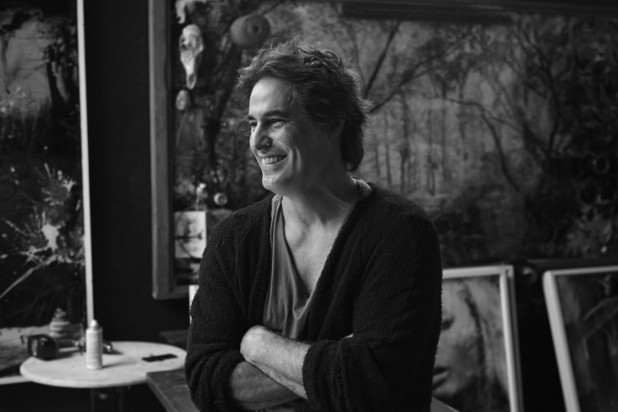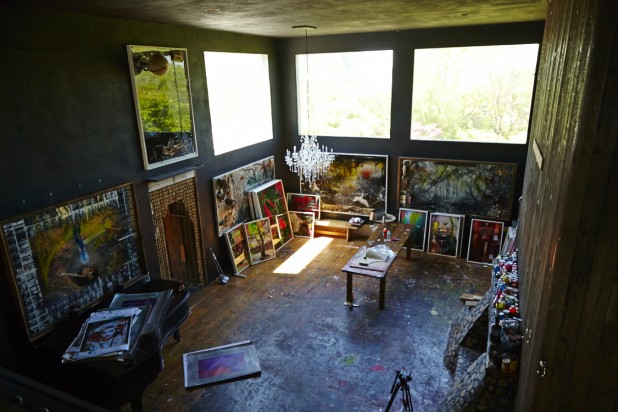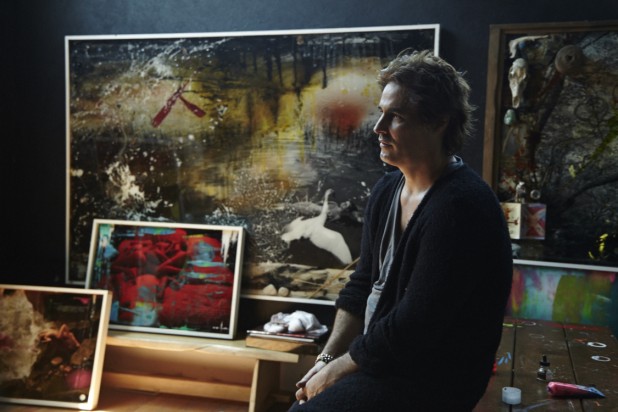Of the hundreds of art spaces in New York City, Bill Powers and his Half Gallery stand out. Behind signature rose-colored glasses, Powers has a keen eye for exceptional talent, who he lets run wild in his recently relocated uptown space. Along with his wife, designer Cynthia Rowley—whom he met while interviewing her for BlackBook magazine—he also runs Exhibition A, curating and selling affordable prints by some of the city’s best artists. The native New Yorker and Montauk local has also dabbled in reality TV—as judge of Bravo’s Work of Art. But that’s just the half (no pun intended) of it: he’s also a published author, master networker, and still finds time for family, surfing, and talking to us about all of the above.
On Montauk:
My grandparents had a fishing boat at the Montauk Marine Basinand we used to stay on the boat when I was a little kid. In a lot of ways it remains the same [as it was back then], in that there are no traffic lights, and all the touristy t-shirt shops you could ever want. And I think that John’s ice cream shop opened the year I was born in ’67. I love Montauk. It’s the least Hamponized out of any of the towns out here still. I know people have the “no fedora” stickers and complain about too many nightclubs. But if you don’t seek that stuff out and just go to the beach and go surfing and grill at your house you can be immune to a lot of those invasion complaints.
On meeting Cynthia:
I was a little nervous. The one funny thing is I stepped out of the room for a minute. I don’t remember if I left the tape recorder on, or if she turned it on, but she goes to her assistant, “I mean, he’s cute but these questions are really boring.” Then later when I was transcribing the tape and I got to that point, my ego demanded that it had to be a joke. That was either 1996 or 1997. Then we both married other people. When we got divorced, years later, we got together.
His wife’s creativity:
I always think it’s amazing that she got her creative/commercial spark from her grandfather on her mom’s side, who had gone to Pratt and was an illustrator. In her office, she has the Pabst Blue Ribbon logo that he designed with his name on the bottom and a Patent Pending stamp. I think it’s an interesting clue to her wanting to do something creative that has that immediate commercial application.
Prepping for interviews:
Now I pretty much only interview artists. Last year Gagosian put out a book of my artist interviews. Most of the time it’s someone whose work I know or have admired. What’s nice about doing an interview like that is it’s like looking for an apartment in New York: you just have to ask everyone you know that you think might have information. I can’t remember who told me that Ed Ruscha used to live in Swifty Lazar’s old house; or I remembered seeing Dan Colen collecting trash in a Louis Vuitton bag and thought, “What the hell is this?” It turned out to be the beginning of his collecting stuff for his Trash paintings. Sometimes proximity is information too.
Getting into the gallery business: In 2008 I was helping the guys from the nonprofit RxArt find a space on the Lower East Side. They only needed half the space and they were looking for someone to rent out the front half of their office. I ran it by Andy Spade, and he said let’s do something together and we’ll call it Half Gallery.
Artist discovery:
There’s not really a formula to it. We opened this Eddie Martinez show (below). And we’re doing a Rene Ricard tribute show. Then we’re showing an Irish painter that Richard Prince discovered on Twitter last year. So there’s not really a clear path.
Uptown vs. Downtown:
After being downtown for five years we were ready for a change. At the time it seemed unexpected to move to the Upper East Side, but we’re a block from where Calder and Picasso used to show. We’re a block away from the old Castelli Gallery. There are more and more galleries opening up here. It’s funny to see Harmony Korine open up here at Gagosian. It’s nice to walk some new floors and get some new ideas. On the business side it’s been amazing. We get less foot traffic at the openings, but more buyers. Since we moved up here we’ve been written up in the New Yorker twice and that never happened downtown. I don’t mean to be a geographic snob because I know the New Yorker will also write about shows downtown, but it never happened for us.
Montauk’s artist history:
I appreciate that there’s art out here. I like that it’s where Warhol had his house, and Peter Beard is still out here. And Julian Schnabel’s in the Seven Sister’s houses as well as Bruce Weber.
Surfing slip-ups:
I once made the mistake of excitedly asking Kelly Slater, “Have you ever been surfing out in Montauk?” and he’s like “Yeah, it sucks, why do you ask?” And I was like, “Oh, never mind.”
On reality TV:
I think it’s one and done on that. I had a lot of fun and it would have been cool if it kept on going just because there’s so little art on television.
His summer reading list:
There’s the catalog for the Raymond Pettibon “Surfers” show. Cynthia has a few copies for sale in the store in Montauk [696 Montauk Hwy]. The last book I read was Rachel Kushner’s Flame Throwers.





